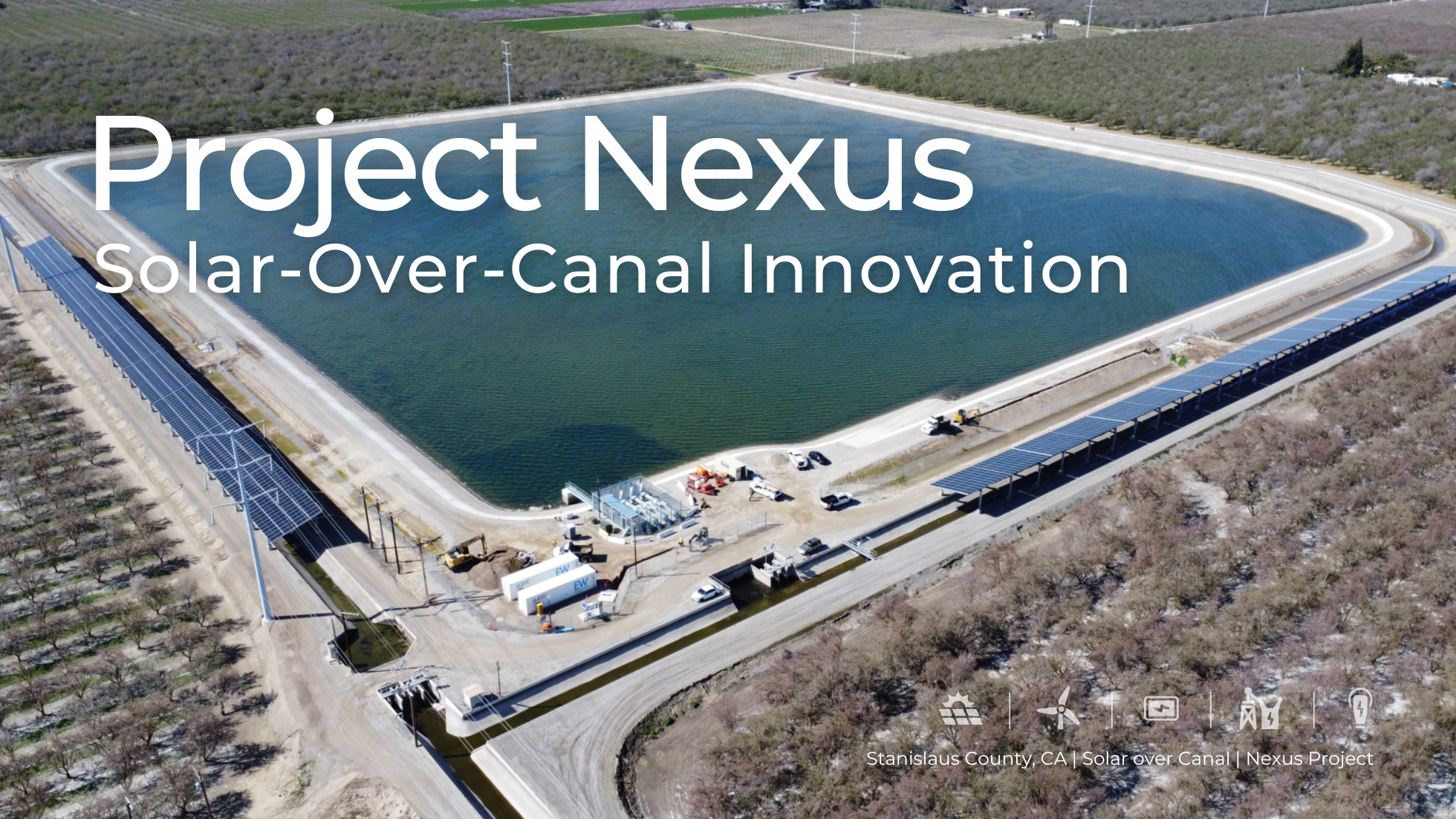Constructing Data Centers that Power Artificial Intelligence (AI) Learn More
Project Nexus: Advancing Solar-Over-Canal Innovation in California

A groundbreaking initiative is redefining the intersection of renewable energy and water conservation. Project Nexus is transforming how California integrates renewable energy with water conservation by utilizing solar-covered canals to generate power while reducing water loss. With the first phase nearing completion and the second phase well underway, this project is proving that smart infrastructure solutions can drive a more resilient and sustainable future.
A Vision for Sustainable Energy and Water Management
Project Nexus is a study led by the University of California, Merced. Implemented by the Turlock Irrigation District (TID) in collaboration with key partners, it explores the potential of solar-covered canals to optimize land use. This innovative approach not only generates clean energy but also reduces water evaporation. The project aims to gather critical data on energy production, water savings, and operational efficiency, setting the stage for future large-scale implementations.
This is the first project of its kind in the U.S. While similar installations have been implemented in India using different mounting systems, Project Nexus is refining the technology to better suit California’s infrastructure and climate needs.
Maximizing Energy and Water Efficiency
The benefits of solar-covered canals extend well beyond energy production. Research suggests that covering California’s canals with solar panels could save 63 billion gallons of water annually—enough to supply 2 million people per year. Additional advantages include:
- Reducing algae growth in the canals by blocking sunlight exposure.
- Generating clean electricity while utilizing existing infrastructure.
- Minimizing land use conflicts, preserving farmland and natural ecosystems.
By utilizing canal infrastructure, this initiative improves water management while expanding renewable energy capacity.
Scaling Up: From Narrow to Wide Canal Spans
Since its launch, Project Nexus has made substantial progress in demonstrating the viability of solar-over-canal technology. The first phase, covering a narrow canal section, is now complete and already generating electricity, demonstrating the structural and energy-producing potential of this model. Now, the project is scaling up with the installation of solar panels over a much wider canal span, further testing its adaptability.
BEI Construction’s Role in Solar Innovation
As a key partner in the execution of Project Nexus, BEI Construction is applying its expertise in renewable energy infrastructure to ensure seamless electrical integration for efficient energy generation. This project also presents unique challenges, particularly for our Safety team, as working over water introduces new considerations beyond traditional land-based solar farms.
One major challenge is adapting engineering solutions to a canal system that stretches 250 miles, where varying widths demand different structural approaches. The second phase alone expands from 20 feet in the first phase to 110 feet wide, requiring customized installation methods. Additionally, safety is a top priority—our crews must navigate over-water construction, implementing specialized precautions such as work platforms, fall protection systems, and advanced electrical safety measures to ensure a secure installation environment.
At BEI Construction, we take pride in solving complex infrastructure challenges. Our work on Project Nexus reflects our commitment to pushing the boundaries of renewable energy integration while maintaining the highest safety standards.
The Future of Project Nexus
With the second phase in progress, Project Nexus is expected to provide valuable insights into energy production, water savings, and operational efficiency. If successful, this model could be replicated across the U.S., expanding clean energy while simultaneously reducing water loss in key regions. Additionally, the water beneath the panels helps regulate panel temperatures, addressing a challenge faced by land-based solar farms and improving overall energy efficiency. These findings will guide future expansion opportunities and contribute to California’s broader push for sustainable infrastructure solutions.